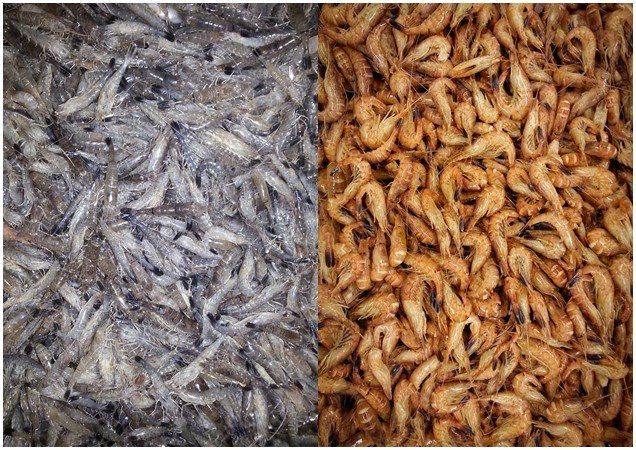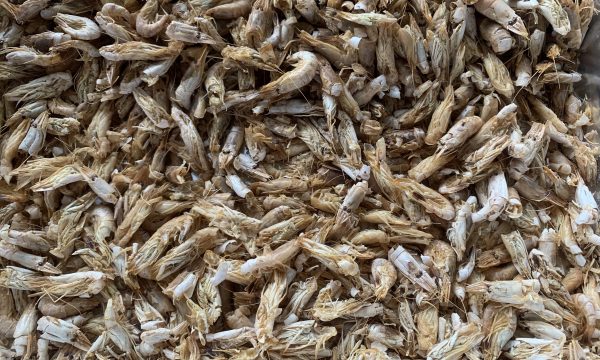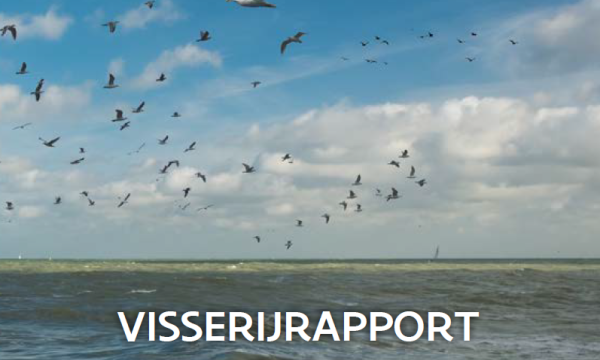Press release Alternative to cooking shrimp opens culinary and economic possibilities for our "Caviar of the North Sea"
Landing and marketing raw, long shelf-life shrimp without loss of quality or nutritional value is now easier thanks to new and optimized techniques. These techniques are the result of doctoral work by Xavier Vermeersch (ILVO - UGent), who was looking for a solution to keep raw shrimp brought ashore alive and in top quality. He did several experiments on Belgian shrimp cutters and in ILVO's labs. Storing the shrimp before sorting and in water that is as cold as possible or freezing the shrimp immediately appeared to be the best solutions.
Until now, the European brown shrimp has always been sorted on board and immediately cooked in seawater, before coming ashore in ordinary refrigerated water. Culinary processing with raw shrimp is currently thus out of the question. However, the demand for raw shrimp is increasing from the catering industry and from abroad. Economically it is becoming worthwhile to be able to supply raw brown shrimp.

Belgians and their shrimp
The European brown shrimp Crangon crangon L., also called the "caviar of the North Sea," is one of the most well-known and beloved fishery products in Belgium and surrounding countries. More than half (54%) of the total European production is destined for the Belgian consumer. Our own Belgian shrimp fishermen brought in nearly 1,000 tons last year. These are sold ultra-fresh (after 1 night the shrimp are already landed and available to the consumer), just not raw.
The shrimp are caught with trawls and traditionally undergo a processing process that is completed within 12 hours of being caught: the shrimp are sorted by size and separated from the bycatch using a sorting machine. The largest shrimp go on board into a large boiler with boiling seawater. After a few minutes, the shrimp are cooked and are quickly cooled, again in seawater. Finally, they are stored in the hold of the fishing vessel until they are brought ashore.
Research in response to a demand from the fishing and hospitality industries
Signals from the fishing industry led the researchers to explore innovative avenues for shrimp preservation. Previous research revealed that after cooking, shrimp are at risk of microbiological contamination during the refrigeration process on board, resulting in more and faster spoilage. Almost always benzoic acid or its salts and preservative acids are used to prevent spoilage in cooked shrimp, but these often overpower the real, subtle taste of the shrimp.
On the other hand, there is the growing demand from (foreign) wholesalers and the catering industry for raw (uncooked) shrimp. Chefs can transform the unprocessed shrimp into new dishes and flavors. But to this increasing demand, fishermen with the traditional processes on shrimp cutters could not offer a large-scale and standardized answer until now.
This research, conducted as part of several projects co-financed by the European Fisheries Fund and the Province of West Flanders, and with financial support from ILVO and Ghent University (UGent), looked at both challenges: Under what conditions can live brown shrimp be kept alive in live tanks for a while after commercial capture? And can freezing uncooked brown shrimp raw offer a good alternative to cooking and cooling in seawater?
The path of live preservation and landing
To meet the high demand of the market, the Belgian fishing fleet recently began experimenting with landing raw shrimp itself. From the last tow, they keep aside a small amount of shrimp alive, which they keep in the water in shallow crates to be sold or exported directly upon landing. However, this approach is still in its infancy, and little to nothing is known about its impact on shrimp survival or final product quality.
Vermeersch's research showed that initial mortality after landing can be very high. All steps during fishing, sorting and storage on board play a crucial role in subsequent survival. Shrimp appear to have a higher survival rate when they have not gone through the sorting machine, when they have been stored in lower temperatures and when they do not show white discoloration in the tail. The latter occurs in an average of 2% of shrimp and is probably caused by specific injuries sustained during on-board capture and sorting procedures.
The path of freezing, for more culinary possibilities
As an additional option for live landing, freezing the gray shrimp proved to be a good option. Other treatments such as vacuum packing and glazing scored significantly worse. Individually frozen shrimp ultimately proved to be the only ones that were still of good quality after four months and appreciated as of sufficient quality by a trained taste panel. Although the organoleptic characteristics (taste, color, odor, crunchiness, chewiness and moisture content) of the cooked shrimp were affected by freezing, the differences were minimal. "Further research is needed, but it is a promising, economically interesting track. It creates the possibility of having a stock of frozen shrimp that can later be used for further culinary treatment," Vermeersch said.
Doctoral defense of Xavier Vermeersch
The defense of the PhD "From sea to land: survival and conservation after capture of the European brown shrimp (Crangon crangon) in the Belgian North Sea fishery" took place in Ghent, Ugent faculty of veterinary medicine, on Sept. 4, 2023.
Promotors:
Prof.
Dr. Koen Chiers, Faculty of Veterinary Medicine, Ghent University
Prof.
Dr. Annemie Decostere, Faculty of Veterinary Medicine, Ghent University
Dr.
ir. Geertrui Vlaemynck, Technology and Food Science Unit, ILVO


